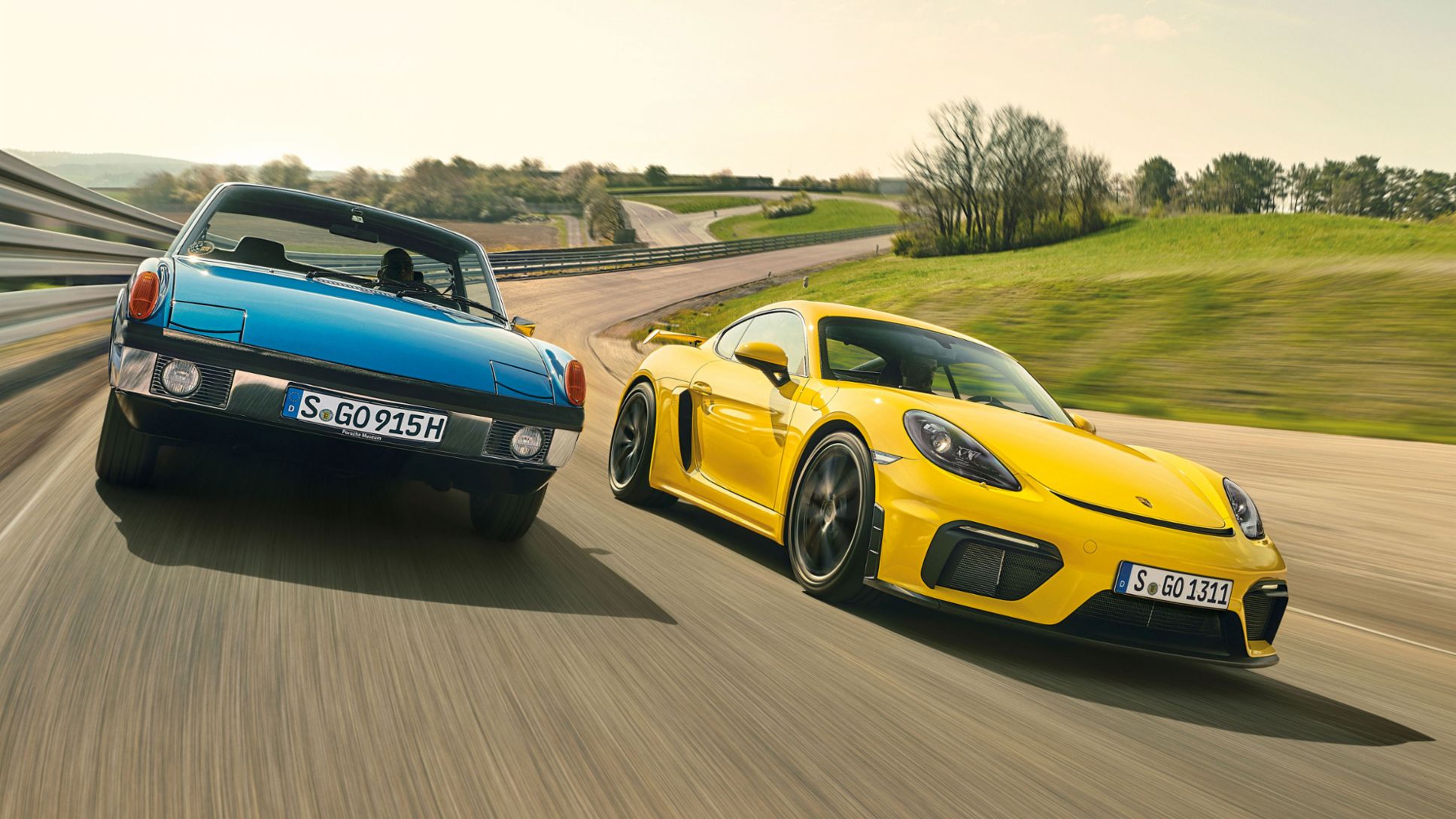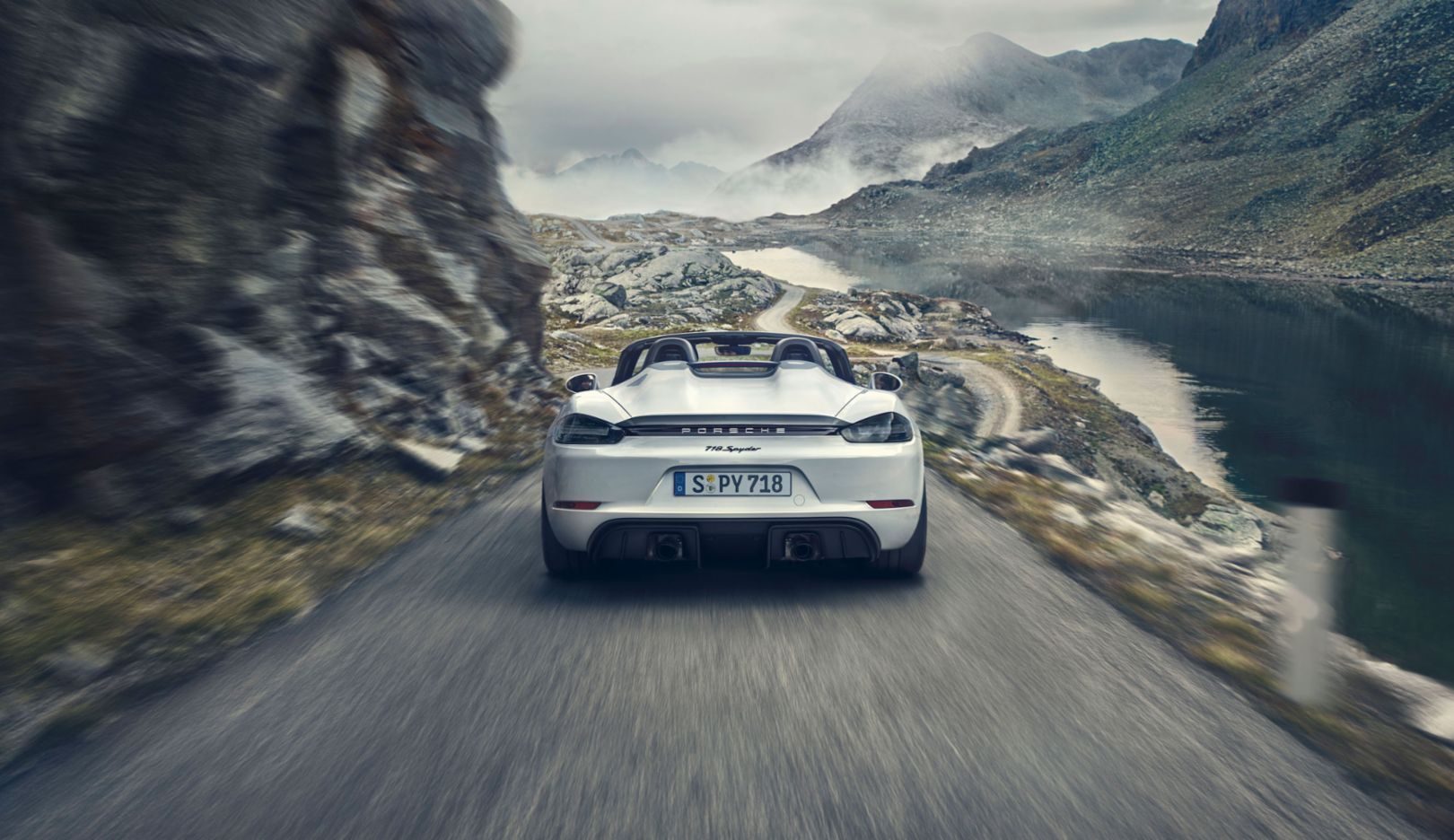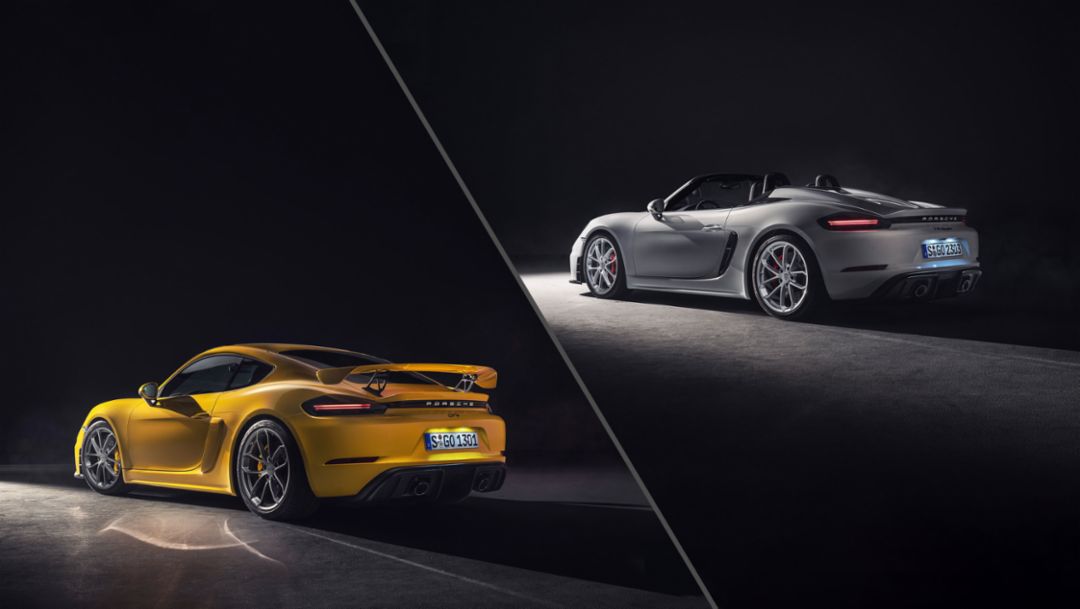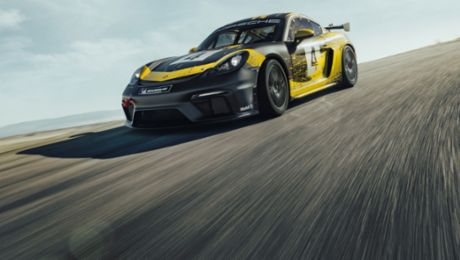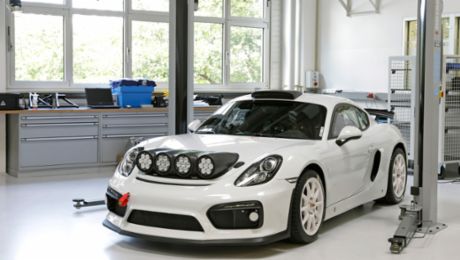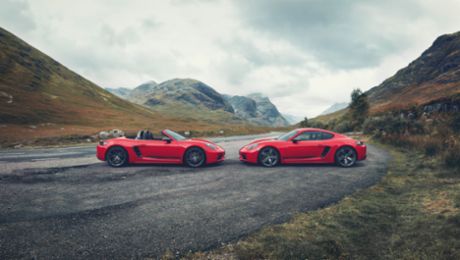Even before it can be seen, the sound is effervescent. It first emerges as a muffled, bubbling rumble that makes the air vibrate. Then comes the ever-brighter crescendo—a bombastic symphony of the sort that only a six-cylinder, naturally aspirated engine can will into being. Brawny. Crisp. Emotional at higher engine speeds. Fractions of a second later, it bolts out of the corner on the test track in Weissach: the most powerful, fastest of its kind, with the potential of an über-Porsche and half a century of tradition in the trunk—the epitome of the mid-engine concept that Porsche took from the track to series production fifty years ago. “The mid-engine sports cars from Porsche possess charming character traits that haven’t changed to this day,” says Andreas Preuninger, director of GT cars. The driver and passenger sit “closer to the machine,” making the driving experience even more emotional. “To my mind, those are critical factors in the success of our mid-engine sports cars.”
Until 1969, there was no question about it; series vehicles from Porsche had their engine in the back. But that changed abruptly with the Porsche 914, that boldly drawn, boxy Targa with the removable roof and the hip, pop-up headlights. Like a race car, the 914 kept its four- or six-cylinder boxer engine in front of the rear axle, around which Porsche head designer Heinrich Klie tailored a body that’s undeniably radical. The 914 is eighteen centimeters shorter than the 911 S from the model year 1967, but the wheelbase is nearly twenty-four centimeters longer. At 1.23 meters high, it’s nine centimeters lower than the 911 and four centimeters wider. The result: an exceptionally low center of gravity with reduced weight. Even the bullish 914/6 with the 110 hp, two-liter, six-cylinder boxer engine from the 911 T weighs in at just 980 kilograms, while the center of mass shifts to the middle of the car. All of which, taken together, made the 914—even with 80 hp—an agile, sprightly driving machine by the standards of the day, pressed to the road like a board. With the four-cylinder models, the ignition lock is on the right and the handbrake to the left of the driver's seat.
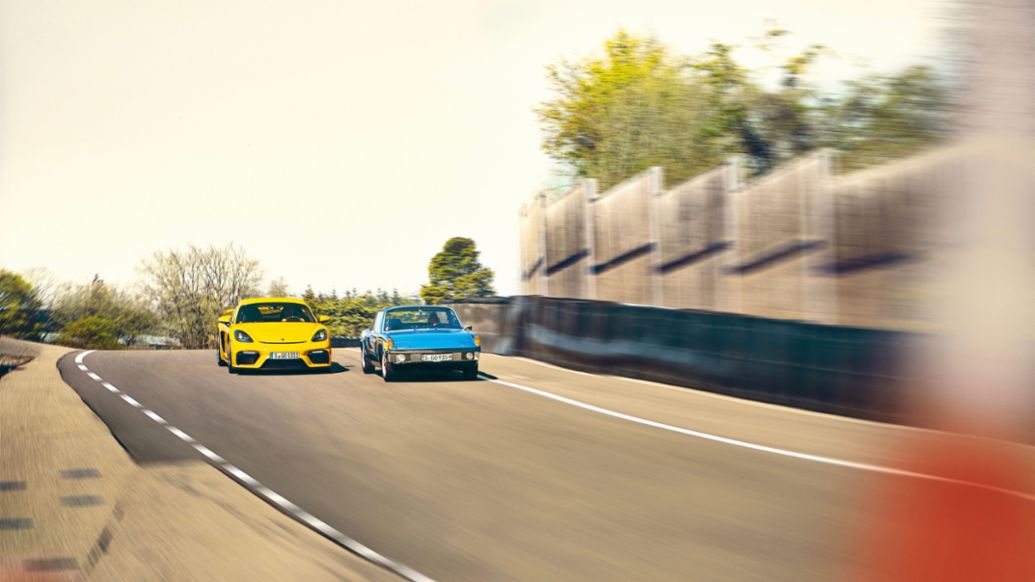
“Mid-engine sports cars have always been at their best on narrow and curvy roads,” says Jan Roth. The director of the 718 model range sums it up succinctly: “Extremely light on its feet and agile.” Exactly 115,631 units of the 914/4 were built at Karmann in Osnabrück through 1976. Meanwhile, 3,338 units of the 914/6 top model came directly from Zuffenhausen until 1972, as did eleven of the Porsche 916 with up to 210 hp, twelve 914/6 GT for racing, and two prototypes with eight-cylinder racing engines—specially built for Ferdinand Piëch and Ferry Porsche.
The 914 was initially something of a rarity—the fruit of a collaboration between Volkswagen and Porsche that ended almost as soon as it began. Today the mid-engine sports car is celebrated as an emblem of a time in which the cars’ Signal Orange found its way into the bathroom decor of the middle class, skirts got shorter, sideburns longer, and the hems on pants expanded to colossal diameters. Yet the 914 was never about fashion. Indeed, the mid-engine concept was used as early as the 1930s. Ferdinand Porsche incorporated it in the Auto-Union Type 22 race car in 1934. In Porsche’s first sports car, the 356 “No. 1” Roadster of 1948, the four-cylinder was positioned in front of the rear axle, which was aligned centrally with the transmission. But the two-seater convertible didn’t offer Ferry Porsche enough storage space. For the coupe model, the engine therefore shifted to the back, making space for emergency seats and luggage—the birth of the classic Porsche.
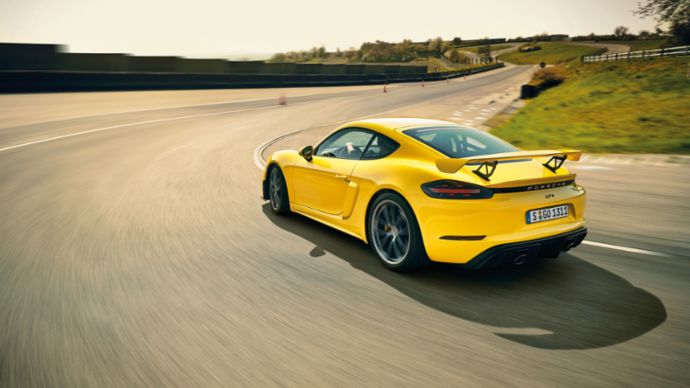
The mid-engine idea ignited the Porsche legend. Racing-mad Americans venerated the 550 Spyder. The stunning aluminum two-seater with its initial 110 hp and later 135 hp, vertical-shaft, four-cylinder engine, came to epitomize its era. James Dean—the rebel, cult figure, forever young—perished in one. For the mid-engine 904, officially the 904 Carrera GTS, Porsche first had to build one hundred street-legal units in order to race it. Due to demand, the final number was 116. Ferdinand Alexander Porsche designed the artificial resin bodyshell of the 904—design history. Of the Carrera GTS, it was later said to have put its stamp on an era of racing.
And yet, after the end of 914 production, the mid-engine concept was put on ice for two decades at Porsche. Zuffenhausen concentrated on four-cylinder transaxle sports cars like the 924, 928, 944, and 968—until the Boxster celebrated its world premiere in 1996. Its water-cooled, six-cylinder engine was positioned before the rear axle, and the gritty sound and exceptional driving characteristics of the roadster caused an immediate stir. In 2005, the coupe version was launched with the Cayman. “Of course,” says Jan Roth in looking back, “the decision in favor of the mid-engine in the 1990s was also influenced by the desire to distinguish the Boxster from the 911. In addition to the visibly different concept, the more balanced weight distribution and having the weight centered in the middle of the vehicle creates sophisticated driving dynamics that can be experienced.” The Boxster and Cayman were a hit. The year 2016 saw the launch of the fourth generation of the model range. The new model designation 718 recalls the 550 Spyder from the 1950s and subsequent 718 models. Four-cylinder engines are used as they were back then, albeit turbocharged in this case.
This year brings the crowning achievement: the 718 Cayman GT4 and the 718 Boxster Spyder. Once again, the Cayman GT4 will feature a high-revving, six-cylinder, naturally aspirated GT engine. It’s even more powerful than the predecessor model and also propels the Boxster Spyder, which together with the suspension and the stability control, resembles an open GT4. “We build both cars for true fans, for racers and purists who have waited for these models and whom we don’t need to persuade of the benefits of the mid-engine concept,” emphasizes Andreas Preuninger. “They don’t buy a 718 GT4 or 718 Spyder because of their stats, but out of pure devotion.”
The coupe and convertible set off a fireworks display of technical refinements. The completely redesigned four-liter boxer engine, now 420 hp strong (309 kW; fuel consumption combined 10.9 l/100 km; CO2 emissions 249 g/km), adopts important components from the new 911, including its electronics. The selective cylinder control cuts out three of the six combustion chambers during constant cruising, thereby lowering consumption considerably. Particle filters help comply with current emissions standards.
The Spyder in particular ups the ante notably with the chassis, which—like the GT4—is based on many lightweight aluminum components from the 911 GT3 and the Cup race car. Newly developed ultra-high-performance tires ensure even greater grip with special rubber mixtures. And the Porsche Active Suspension Management (PASM) and Porsche Stability Management (PSM) driving dynamics systems are precisely adapted to work in lockstep with the new features. And, as in all GT models from Porsche, they can be completely switched off as well. Optional ceramic brakes reduce the unsprung masses per wheel by up to 4.75 kilograms, or almost 50 percent.
The aerodynamics are part of the performance. The mid-engine concept offers sufficient space in the back for a diffuser channel, which improves the GT4’s downforce by 25 percent and cuts the Spyder’s lift by half—without increasing drag. It is what Markus Atz, project manager for motorsport GT street vehicles, refers to as “aerodynamic efficiency.”
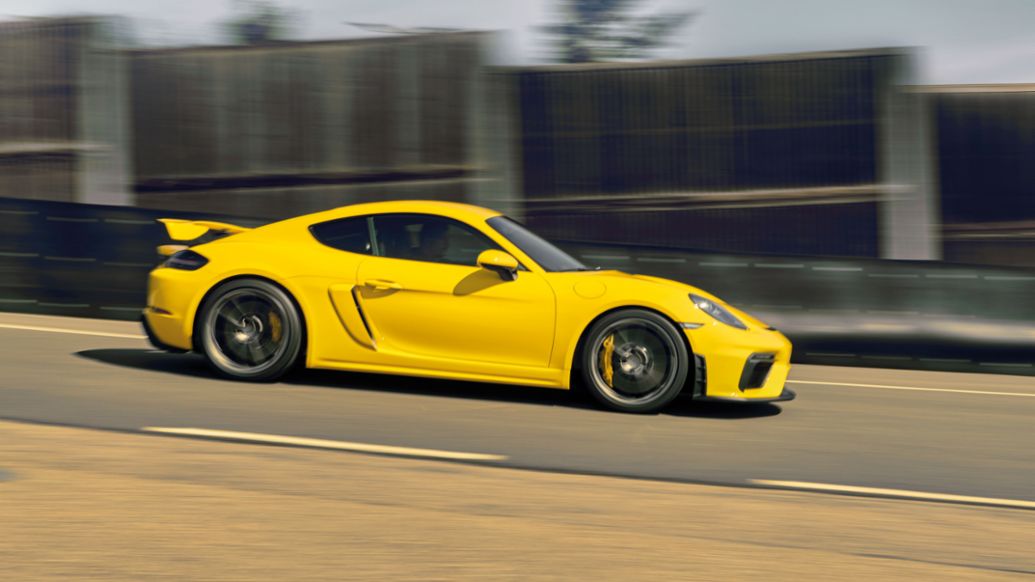
And the exceptional handling characteristics that once defined the 914? “Thanks to the modern suspension kinematics and the high grip of the tires, mid-engine sports cars like the GT4 or Spyder drive like they’re from another planet, even without vehicle stability control systems activated,” says Atz with a wry grin. “Fifty years of continuous development do pay off.”
